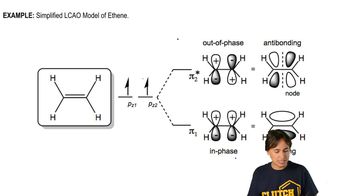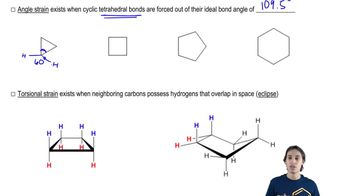Textbook Question
What is the hybridization of all the atoms (other than hydrogen) in each of the following?
What are the bond angles around each atom?
i. H3O+
j. H2C═O
 Verified step by step guidance
Verified step by step guidance Verified video answer for a similar problem:
Verified video answer for a similar problem:



 2:53m
2:53mMaster How carbon creates 4 partially-filled orbitals. with a bite sized video explanation from Johnny
Start learning